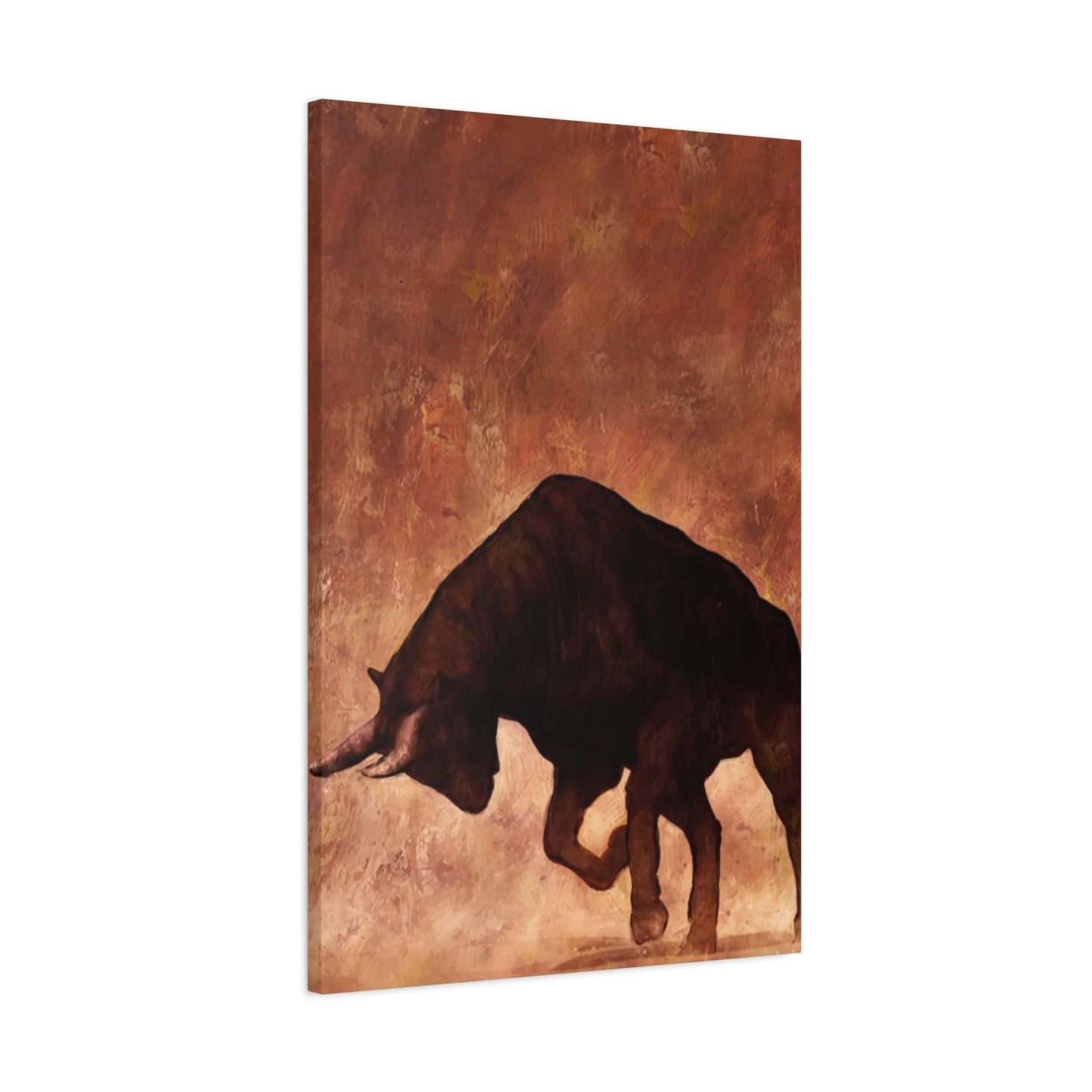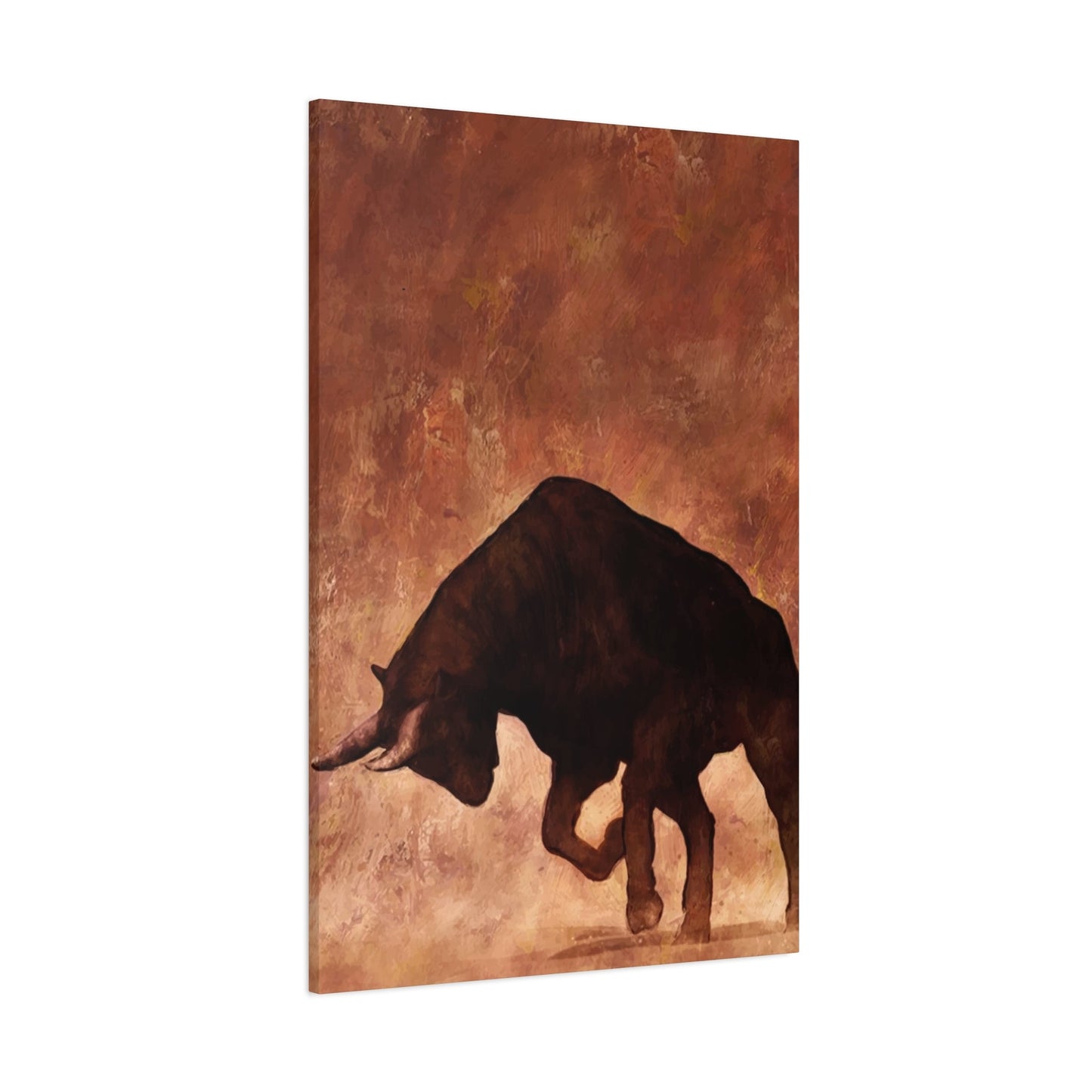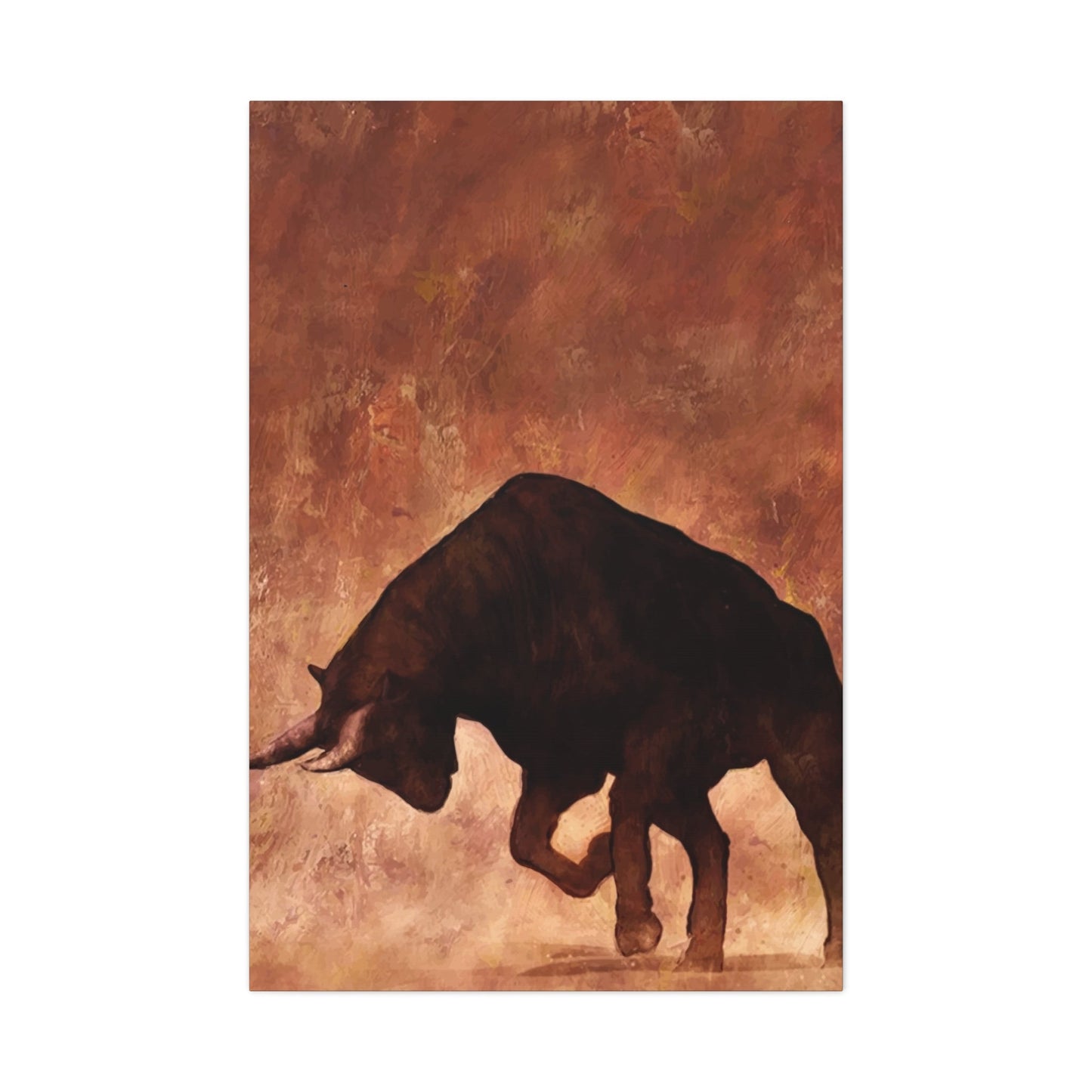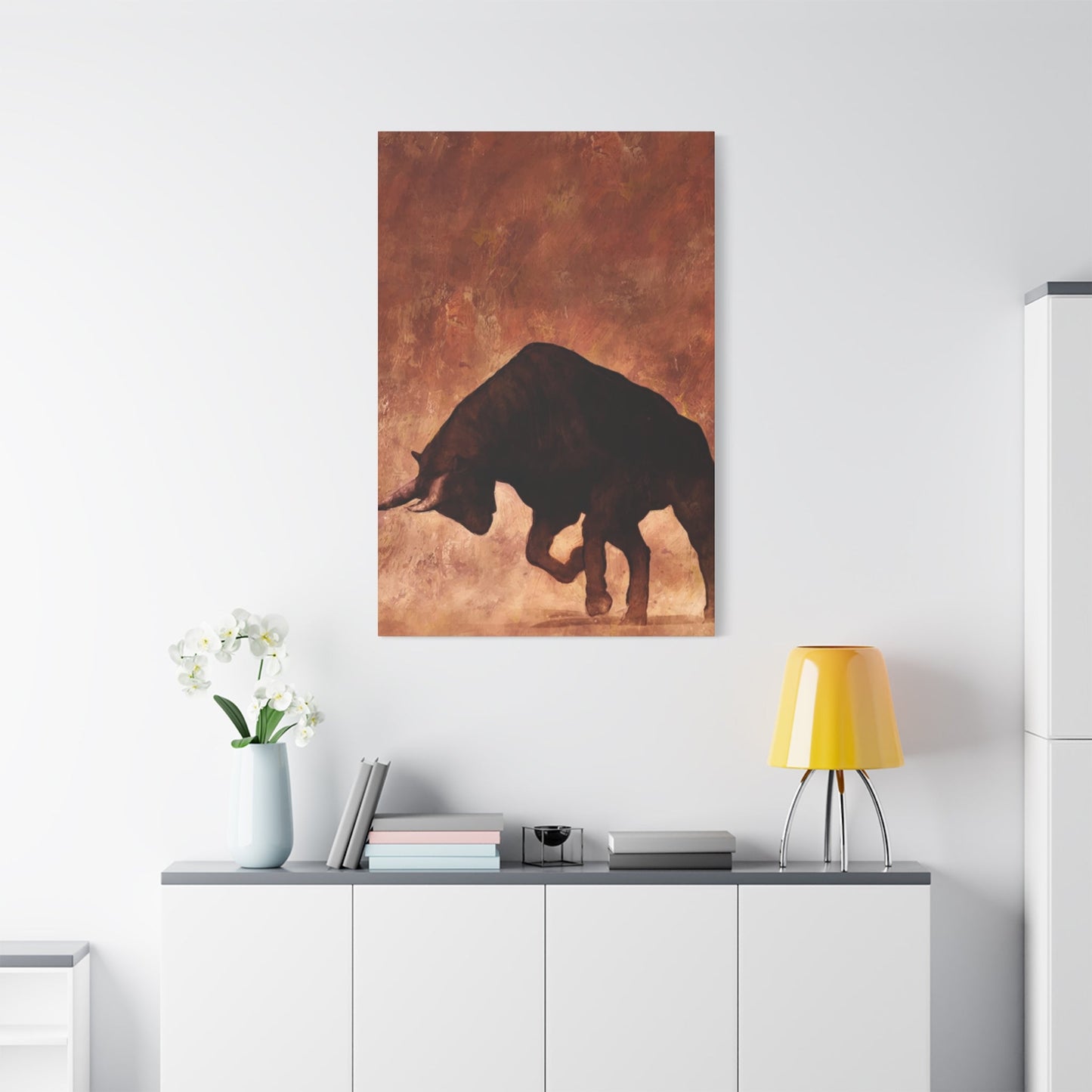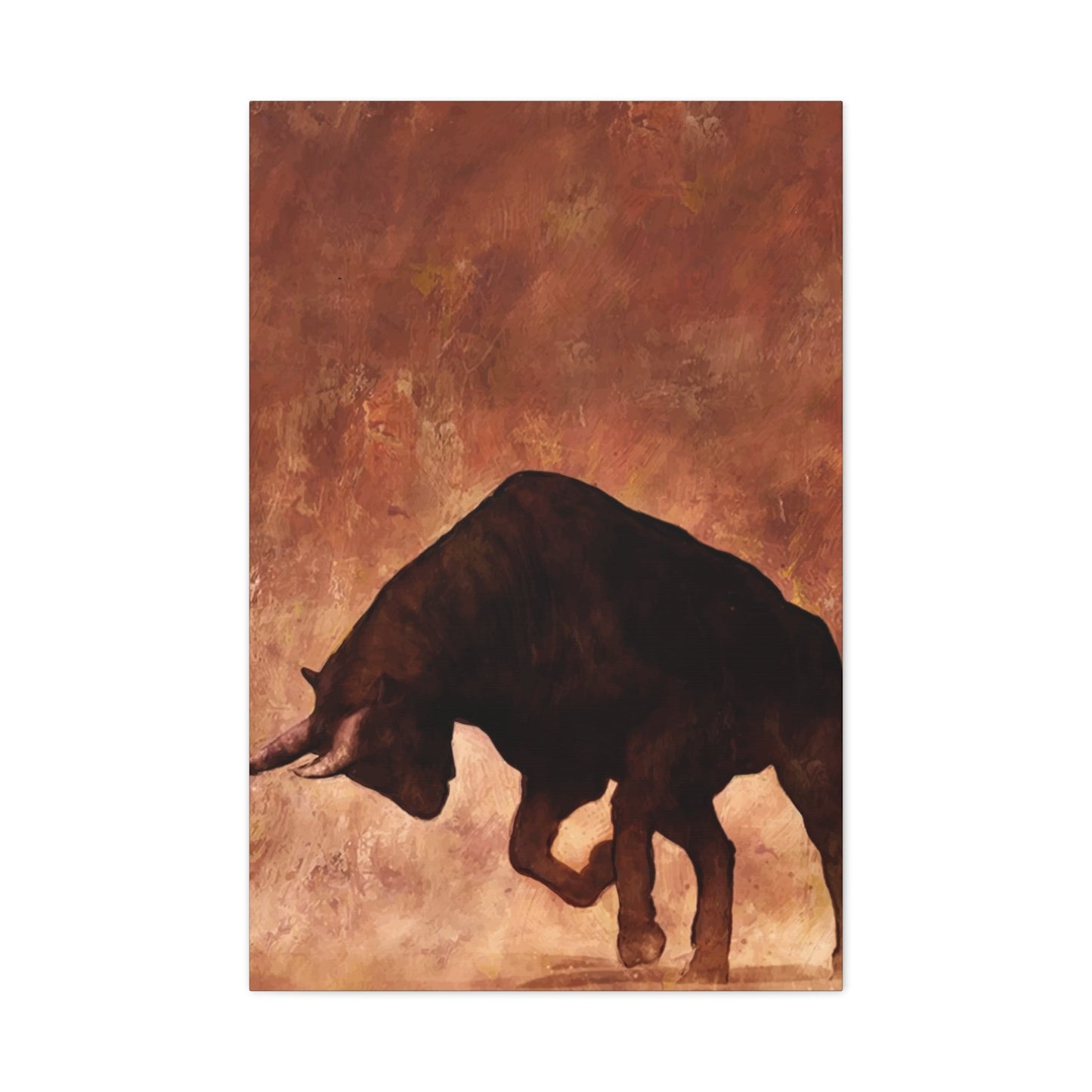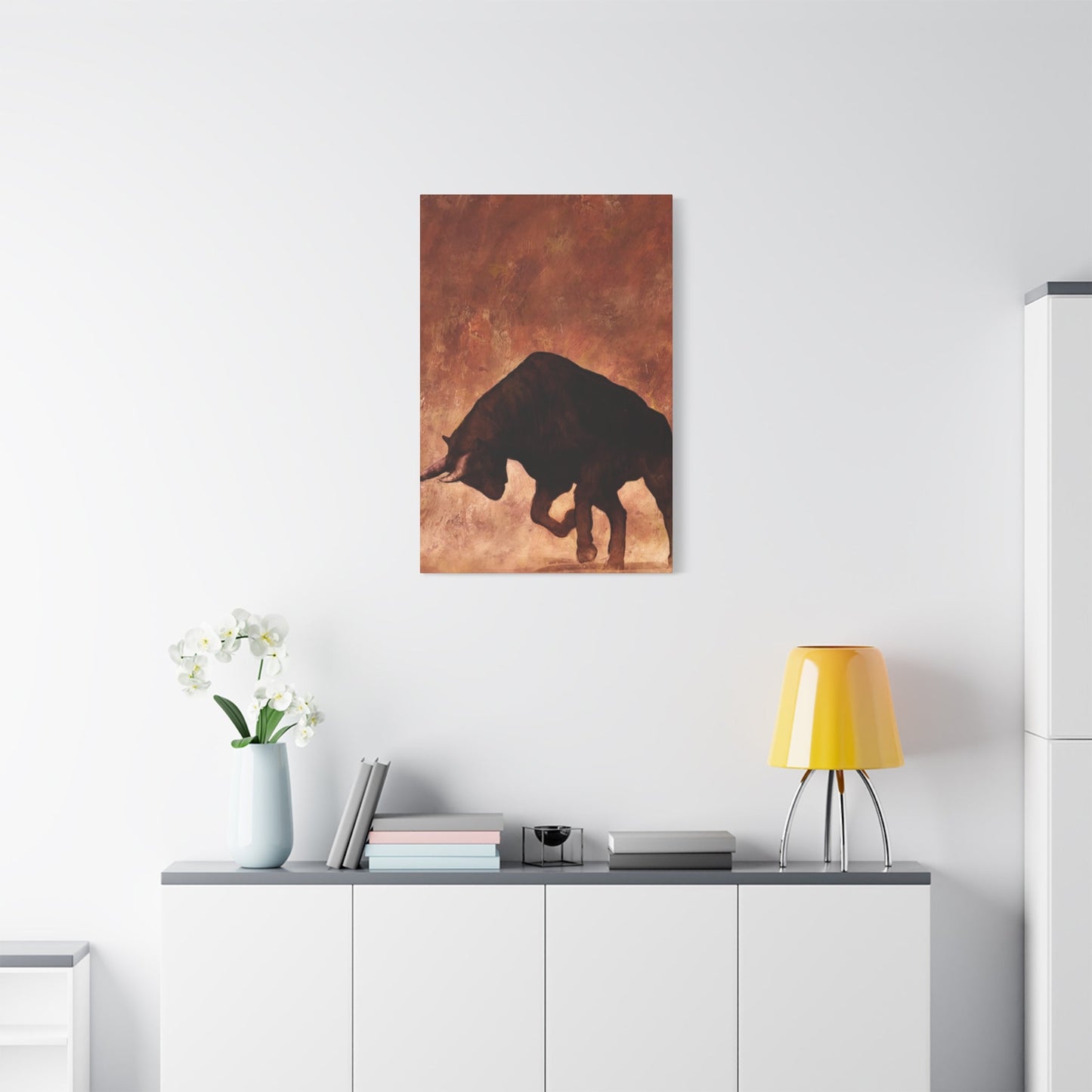Raging Bulls Wall Art: Cultural Impact and Artistic Expression Across Civilizations
The powerful imagery of bulls has captivated human imagination for millennia, transcending cultures and artistic mediums. From ancient cave paintings to contemporary wall art installations, the representation of these magnificent creatures continues to evoke emotions ranging from reverence to fear. This comprehensive exploration delves into the multifaceted relationship between bulls and human creativity, examining how these animals have shaped artistic expression, cultural narratives, and social movements throughout history.
The bull's presence in wall art serves as more than mere decoration; it represents strength, fertility, virility, and sometimes destructive power. Artists have long recognized the symbolic weight these creatures carry, incorporating their likeness into everything from religious murals to modern street art. The evolution of bull imagery in wall art reflects changing societal values, artistic techniques, and cultural perspectives across different civilizations.
How Fierce Bulls Have Shaped Creative Expression and Written Works
The influence of bulls on artistic and literary traditions spans thousands of years, creating a rich tapestry of cultural significance that continues to resonate today. Ancient civilizations revered these powerful animals, incorporating their imagery into religious ceremonies, mythological narratives, and decorative arts. The bull's symbolic representation has evolved from divine incarnations to metaphors for human emotions and societal forces.
In ancient Mesopotamia, bulls represented divine power and protection, frequently appearing in palace reliefs and temple decorations. The famous Ishtar Gate of Babylon featured magnificent bull reliefs, demonstrating the creature's importance in royal iconography. These early artistic representations established patterns that would influence generations of artists and writers, creating a visual language that transcended cultural boundaries.
Egyptian civilization similarly embraced bull symbolism, with the sacred Apis bull serving as an earthly manifestation of divine power. Wall paintings in tombs and temples depicted bulls in various contexts, from agricultural scenes to religious ceremonies. The artistic techniques developed to portray these animals influenced Egyptian artistic conventions for centuries, establishing standards for proportion, movement, and symbolic meaning.
Greek mythology elevated bulls to legendary status through stories like the Minotaur, the bull of Marathon, and Zeus's transformation into a bull to seduce Europa. These narratives inspired countless artistic works, from classical pottery paintings to Renaissance frescoes. The psychological complexity of these stories provided writers and artists with rich material for exploring themes of power, transformation, and human nature.
Roman culture inherited Greek bull symbolism while adding their own interpretations, particularly in the context of gladiatorial games and religious practices. The cult of Mithras featured bull sacrifice as a central ritual, inspiring elaborate underground temple murals that depicted cosmic battles between good and evil. These artistic representations demonstrated sophisticated understanding of symbolic meaning and narrative structure.
Medieval European art transformed bull imagery to align with Christian symbolism, often representing the Evangelists or depicting moral allegories. Illuminated manuscripts featured intricate bull designs that combined religious significance with decorative beauty. Gothic cathedral sculptures incorporated bull motifs into architectural elements, creating lasting monuments to artistic skill and spiritual devotion.
The Renaissance period witnessed renewed interest in classical bull imagery, with artists like Michelangelo and Raphael incorporating these creatures into their masterworks. The development of oil painting techniques allowed for more realistic and emotionally powerful bull depictions, inspiring literary works that explored similar themes of passion, strength, and conflict.
Modern literature has embraced bull symbolism in various forms, from Ernest Hemingway's exploration of bullfighting culture to contemporary novels that use bull imagery to examine masculinity, violence, and social change. These literary works often draw inspiration from visual arts, creating interconnected cultural dialogues that enrich both mediums.
Contemporary artists continue to reinterpret bull imagery for modern audiences, addressing current social issues while honoring traditional symbolic meanings. Street artists, muralists, and gallery painters create wall art that speaks to contemporary concerns while maintaining connections to historical artistic traditions. This ongoing evolution demonstrates the enduring power of bull imagery to communicate complex ideas and emotions across cultural boundaries.
The relationship between bulls and creative expression extends beyond individual artworks to influence entire artistic movements. Surrealist painters used bull imagery to explore unconscious desires and fears, while abstract expressionists employed bull forms to convey emotional intensity and gestural power. These artistic innovations continue to inspire contemporary creators working in various mediums.
Digital art and new media have opened fresh possibilities for bull imagery, allowing artists to create interactive wall art installations that respond to viewer presence or environmental conditions. These technological advances expand the potential for bull symbolism while maintaining connections to traditional artistic values and cultural meanings.
The Scientific Foundation of Bull Aggression and Behavioral Patterns
Understanding bull behavior requires examination of complex biological, environmental, and social factors that influence these animals' responses to various stimuli. Contrary to popular misconceptions, bulls do not inherently possess uncontrollable rage but rather display predictable behavioral patterns based on evolutionary adaptations and environmental circumstances. Scientific research has revealed sophisticated social structures and communication systems that govern bull behavior in natural and managed settings.
Bull aggression typically manifests as territorial defense, protection of herd members, or response to perceived threats. These behaviors evolved over millions of years to ensure survival in competitive environments where physical strength determined reproductive success and resource access. Modern scientific studies have identified specific triggers that activate aggressive responses, including sudden movements, loud noises, unfamiliar scents, and invasion of personal boundaries.
Hormonal factors play crucial roles in bull behavior, with testosterone levels significantly influencing aggression patterns throughout different life stages. Young bulls experience hormonal fluctuations that can lead to unpredictable behavior, while mature animals often develop more stable temperaments based on social experience and environmental familiarity. Seasonal variations in hormone production also affect behavioral patterns, with breeding seasons typically associated with increased aggression and territorial displays.
Neurological research has revealed complex brain structures responsible for processing threat assessment and behavioral responses in bulls. The amygdala, responsible for fear processing, works in conjunction with other brain regions to evaluate situations and determine appropriate responses. This sophisticated neural network allows bulls to distinguish between genuine threats and benign stimuli, though individual variations in brain development can lead to different behavioral patterns.
Environmental factors significantly influence bull behavior, with overcrowding, inadequate nutrition, and stressful conditions contributing to increased aggression. Studies have demonstrated that bulls raised in naturalistic environments with adequate resources and social interaction display markedly different behavioral patterns compared to those kept in restrictive conditions. These findings have important implications for animal welfare and human safety in various settings.
Social hierarchy within bull groups follows complex patterns based on age, size, strength, and experience. Dominant bulls establish territories and mating privileges through displays of strength and intimidation rather than constant physical confrontation. Understanding these social dynamics helps explain behavioral patterns that might otherwise appear random or unpredictable to human observers.
Communication among bulls involves sophisticated visual, auditory, and chemical signals that convey information about emotional states, intentions, and social status. Body language, vocalizations, and scent marking create complex communication networks that help maintain social order and minimize unnecessary conflicts. Researchers have identified specific behavioral patterns that indicate escalating aggression, allowing for better prediction and prevention of dangerous situations.
Genetic factors contribute to individual variations in bull temperament, with certain bloodlines displaying consistently calmer or more aggressive tendencies. Selective breeding programs have successfully developed bull populations with desired behavioral characteristics, demonstrating the hereditary nature of many temperamental traits. However, environmental factors continue to play crucial roles in determining final behavioral outcomes.
Pain and discomfort can significantly alter bull behavior, with injured or ill animals displaying increased aggression or unpredictable responses to normal stimuli. Veterinary research has identified various health conditions that can affect temperament, emphasizing the importance of proper medical care in maintaining predictable behavior patterns. Regular health monitoring helps identify potential behavioral changes before they become problematic.
Training and conditioning can modify bull behavior through positive reinforcement and consistent handling practices. Professional animal handlers use scientific principles of learning theory to develop trust-based relationships with bulls, reducing stress and aggressive responses through gradual exposure to various stimuli. These techniques demonstrate that bull behavior can be influenced through appropriate management practices.
Modern research continues to reveal new aspects of bull cognition and emotional capacity, challenging traditional assumptions about these animals' mental capabilities. Studies have documented problem-solving abilities, memory retention, and emotional responses that suggest greater psychological complexity than previously recognized. This expanding understanding has implications for animal welfare standards and handling procedures.
Fierce Bulls in Athletic Competition and Terminology Origins
The association between bulls and competitive athletics extends far beyond literal animal involvement, encompassing metaphorical applications that have shaped sporting culture and language for centuries. The term "raging bull" in athletic contexts typically describes competitors who display intense determination, physical dominance, and relentless pursuit of victory. This linguistic connection reflects deeper cultural associations between bull characteristics and desirable athletic qualities.
Historical precedents for bull-related sporting terminology can be traced to ancient civilizations where bull worship and athletic competition intersected. Roman gladiatorial games occasionally featured actual bulls as opponents, creating direct connections between animal behavior and athletic performance. These events influenced Latin terminology that eventually evolved into modern sporting vocabulary, establishing linguistic patterns that persist today.
Boxing culture has particularly embraced bull imagery, with fighters adopting bull-inspired nicknames and fighting styles that emphasize aggressive forward movement and overwhelming physical presence. The psychological impact of bull associations extends beyond individual fighters to influence training methods, promotional materials, and fan culture. This symbolic relationship reflects broader cultural values regarding masculinity, strength, and competitive success.
Football terminology incorporates bull imagery in various contexts, from team mascots to tactical descriptions of offensive and defensive strategies. Coaches often use bull metaphors to encourage aggressive play while maintaining strategic discipline, creating linguistic bridges between animal behavior and tactical execution. These metaphorical applications help communicate complex strategic concepts through familiar behavioral references.
Wrestling traditions have long incorporated bull symbolism, with certain holds and techniques named after bull behaviors. The psychological aspects of wrestling competition often involve establishing dominance through displays of strength and determination that mirror bull territorial behaviors. Training regimens sometimes include exercises designed to develop "bull-like" characteristics of persistence and physical toughness.
Track and field events utilize bull metaphors to describe explosive athletic performances, particularly in throwing events and sprinting competitions. The concept of "charging" like a bull toward victory resonates with athletes and spectators alike, creating emotional connections that enhance competitive experiences. These linguistic associations influence training philosophies and performance psychology approaches.
Team sports culture has adopted bull imagery for mascots, logos, and organizational identity, recognizing the positive associations between bull characteristics and competitive success. The Chicago Bulls basketball team represents perhaps the most famous example, using bull symbolism to project images of power, determination, and championship aspirations. Such branding decisions reflect careful consideration of cultural associations and their potential impact on team identity.
Athletic training methodologies sometimes incorporate principles derived from observing bull behavior, particularly regarding explosive power development and aggressive pursuit of objectives. Strength and conditioning programs may emphasize exercises that develop "bull-like" characteristics while maintaining human athletic requirements. These training approaches demonstrate practical applications of animal behavior observations in competitive athletics.
The evolution of sporting terminology continues to incorporate new bull-related expressions as athletic culture develops and changes. Social media and broadcast commentary have introduced fresh metaphorical applications that reach wider audiences than traditional sporting circles. These linguistic innovations demonstrate the ongoing relevance of bull imagery in contemporary athletic culture.
International sporting cultures have developed their own bull-related terminology and traditions, creating diverse applications of similar symbolic themes. Spanish sporting culture particularly embraces bull imagery due to bullfighting traditions, while other cultures emphasize different aspects of bull symbolism in their athletic contexts. These variations demonstrate both universal appeal and cultural specificity in bull-related sporting expressions.
Professional athletics marketing often leverages bull imagery to create emotional connections with audiences, recognizing the powerful psychological associations these animals evoke. Advertising campaigns, merchandise design, and promotional materials frequently incorporate bull themes to communicate messages about strength, determination, and competitive excellence. These marketing strategies demonstrate commercial recognition of bull symbolism's cultural power.
The future of bull-related athletic terminology likely involves continued evolution as sporting culture adapts to changing social values and technological advances. New sports and competition formats may develop fresh applications of bull imagery while maintaining connections to traditional symbolic meanings. This ongoing development ensures that bull associations will continue influencing athletic culture for generations to come.
Ten Legendary Bulls That Changed Historical Narratives
Throughout history, certain individual bulls have achieved legendary status through their extraordinary characteristics, cultural significance, or historical impact. These remarkable animals transcended their biological roles to become symbols, catalysts for historical events, or subjects of enduring cultural narratives. Their stories demonstrate the profound influence individual animals can have on human civilization and cultural development.
The Apis bulls of ancient Egypt represent perhaps the most systematically venerated bulls in recorded history, with each successive animal serving as the living embodiment of the god Ptah. These sacred bulls lived in luxury within temple complexes, attended by priests and worshipped by thousands of devotees. Upon death, each Apis bull underwent elaborate mummification processes and burial in the Serapeum, creating one of history's most impressive animal cemeteries. The discovery of these burial sites provided archaeologists with invaluable insights into ancient Egyptian religious practices and cultural values.
The Minotaur, while mythological, has influenced Western culture for over two millennia through its representation of human-animal duality and the consequences of divine punishment. This half-bull, half-human creature served as the centerpiece of one of Greek mythology's most enduring tales, inspiring countless artistic works and literary interpretations. The labyrinth constructed to contain the Minotaur became a powerful metaphor for psychological complexity and the hero's journey, influencing everything from medieval cathedral designs to modern psychological theories.
The bull that carried Europa across the Mediterranean, according to Greek mythology, established one of the foundational myths of European civilization. This divine transformation by Zeus represented themes of abduction, transformation, and the meeting of different cultures that would resonate throughout Western literature. The story influenced artistic depictions of divine intervention and romantic conquest while providing etymological origins for the European continent's name.
Ferdinand the Bull, created by author Munro Leaf in 1936, became one of literature's most beloved pacifist characters, challenging traditional associations between bulls and aggression. This children's story promoted messages of nonviolence and individuality during a period of rising global tensions, becoming a subtle anti-war statement that resonated with readers worldwide. Ferdinand's preference for smelling flowers over fighting influenced discussions about masculinity, aggression, and personal choice in ways that continue to impact contemporary culture.
Bodacious, widely considered the greatest bucking bull in rodeo history, achieved legendary status through his extraordinary ability to unseat even the most skilled riders. During his career from 1992 to 1995, Bodacious became known as "The World's Most Dangerous Bull," successfully throwing 127 of his 135 riders and earning over $56,000 in prize money. His performances elevated rodeo entertainment while highlighting the athletic abilities of both human competitors and animal athletes, influencing breeding programs and competition standards.
The Wall Street Bull, created by artist Arturo Di Modica in 1989, transformed from unauthorized guerrilla art installation to global symbol of financial power and American capitalism. Originally placed near the New York Stock Exchange without permission, this bronze sculpture has become one of New York City's most photographed landmarks. The bull's symbolism of market strength and economic optimism has influenced financial terminology and popular culture references worldwide.
Bushwacker, another legendary rodeo bull, dominated Professional Bull Riders competitions from 2009 to 2014, achieving a 87.5% buckoff rate and earning over $250,000 in career earnings. His consistent performance and distinctive bucking style made him a fan favorite while demonstrating the athletic capabilities of well-bred and properly managed bulls. Bushwacker's success contributed to increased appreciation for rodeo animals as athletes rather than mere equipment.
The sacred bulls of Hinduism, while not individual animals, represent ongoing religious traditions that influence the lives of over one billion people worldwide. These animals receive protection, reverence, and care based on religious beliefs that date back thousands of years. Their cultural significance affects agricultural practices, dietary customs, and social policies across South Asia while influencing global discussions about animal rights and religious freedom.
The Charging Bull of Pamplona, while comprising multiple animals during the annual Running of the Bulls festival, represents collective cultural significance that attracts hundreds of thousands of visitors annually. These events, immortalized in Ernest Hemingway's literature and countless documentaries, demonstrate the ongoing appeal of human-bull interactions while raising questions about animal welfare and cultural tradition preservation.
Asteroid, a bucking bull from the early 20th century, helped establish many of the rules and safety protocols still used in modern rodeo competition. His exceptional bucking ability and unpredictable nature forced organizers to develop better protective equipment and competition standards, influencing the evolution of rodeo as both sport and entertainment. Asteroid's legacy demonstrates how individual animals can drive improvements in athletic safety and competition integrity.
Traditional Bullfighting and Contemporary Perspectives on Bull Mythology
The practice of bullfighting represents one of humanity's most complex and controversial relationships with bulls, combining artistic expression, cultural tradition, and ethical considerations that continue to evolve in contemporary society. Traditional bullfighting ceremonies developed over centuries into highly ritualized performances that blend elements of dance, drama, and athletic competition while raising fundamental questions about animal welfare and cultural preservation.
Spanish bullfighting traditions emerged from medieval hunting practices and Moorish influences, gradually developing into the standardized format recognized today. The modern corrida involves three distinct phases, each requiring specific skills and presenting particular challenges for both matador and bull. These ceremonial elements create dramatic narratives that have inspired countless artistic works while generating ongoing debates about their ethical implications.
The mythology surrounding bullfighting often portrays these events as noble contests between human intelligence and animal strength, emphasizing themes of courage, artistry, and cultural identity. Proponents argue that bullfighting represents authentic cultural expression that connects contemporary society with historical traditions while providing economic benefits to rural communities. This perspective emphasizes the ceremonial aspects of bullfighting while minimizing concerns about animal suffering.
Portuguese bullfighting traditions differ significantly from Spanish practices, typically ending without killing the bull and emphasizing horsemanship skills over foot-based matador work. These variations demonstrate that bullfighting cultures have developed different approaches to human-bull interactions while maintaining ceremonial significance. The Portuguese model has influenced discussions about potential reforms that might preserve cultural elements while addressing animal welfare concerns.
French bullfighting occurs primarily in southern regions with historical Spanish connections, creating unique regional variations that blend Spanish techniques with local cultural elements. These events often incorporate additional entertainment elements and modified rules that reflect contemporary French values while maintaining traditional ceremonial structures. The evolution of French bullfighting demonstrates how cultural practices adapt to changing social contexts.
Latin American bullfighting traditions, particularly in Mexico, Peru, and Colombia, have developed distinctive characteristics that reflect indigenous cultural influences and colonial histories. Mexican bullfighting, in particular, has produced legendary matadors and distinctive artistic styles that influence global perceptions of the practice. These regional variations demonstrate how cultural practices evolve through geographical and cultural transplantation.
Modern opposition to bullfighting has grown significantly in recent decades, driven by increased awareness of animal welfare concerns and changing cultural values regarding human-animal relationships. Animal rights organizations have documented the physical and psychological stress experienced by bulls during these events, challenging traditional justifications based on cultural heritage and artistic merit. These campaigns have achieved significant success in reducing bullfighting venues and attendance.
Economic factors play increasingly important roles in bullfighting discussions, with declining attendance and reduced government subsidies affecting the financial viability of traditional venues. Younger generations often show less interest in bullfighting, leading to concerns about cultural continuity and economic sustainability for communities historically dependent on these events. These economic pressures create additional motivations for examining potential alternatives or reforms.
Alternative practices have emerged that attempt to preserve cultural elements of bullfighting while eliminating lethal outcomes for bulls. Bloodless bullfighting, popular in some regions, maintains ceremonial elements while using protective coverings to prevent injuries. These innovations demonstrate potential pathways for cultural adaptation that might satisfy both traditionalists and animal welfare advocates.
Contemporary artists continue to draw inspiration from bullfighting imagery while often critiquing the practice's ethical implications. Modern interpretations frequently emphasize themes of violence, exploitation, and cultural conflict rather than celebrating traditional heroic narratives. These artistic perspectives contribute to ongoing cultural debates about appropriate relationships between humans and animals.
Tourism considerations increasingly influence bullfighting policies, with some regions promoting these events as cultural attractions while others distance themselves to appeal to internationally conscious visitors. The tourism industry's response to changing consumer preferences affects the economic calculations surrounding bullfighting preservation, creating additional pressures for evolution or elimination.
Legal developments across various jurisdictions have restricted or eliminated bullfighting through animal welfare legislation, demonstrating how changing social values influence legal frameworks. These legal changes often generate significant political controversy while reflecting broader shifts in public opinion regarding acceptable forms of entertainment and cultural expression.
Psychological Foundations of Aggressive Behavior in Bulls
The psychological mechanisms underlying bull aggression involve complex interactions between genetic predispositions, environmental factors, and learned behaviors that develop throughout an animal's lifetime. Understanding these psychological foundations requires examination of both instinctual responses and adaptive behaviors that have evolved to ensure survival in competitive natural environments. Modern research has revealed sophisticated emotional and cognitive processes that challenge simplistic assumptions about bull aggression.
Fear responses play crucial roles in aggressive behavior, with bulls often displaying defensive aggression when they perceive threats to their safety or territory. The psychological processing of fear involves rapid assessment of environmental cues, activation of stress response systems, and selection of appropriate behavioral responses. These fear-based reactions represent adaptive responses that have ensured species survival over millions of years of evolution.
Territorial psychology in bulls involves complex cognitive mapping of preferred areas and recognition of boundaries that trigger protective behaviors. Bulls develop mental representations of their territories that include resource locations, safe zones, and potential threat sources. Violation of these psychological boundaries activates aggressive responses designed to maintain territorial integrity and resource access.
Social dominance hierarchies create psychological frameworks that influence bull behavior in group settings, with individual animals developing internal sense of rank and appropriate responses to various social situations. These hierarchical systems reduce overall conflict by establishing predictable behavioral patterns that most group members respect. Disruption of established hierarchies through introduction of new animals or environmental changes can trigger aggressive episodes.
Stress psychology significantly affects bull behavior, with chronic stress conditions leading to increased aggression and unpredictable responses to normal stimuli. The physiological effects of stress include elevated hormone levels, altered brain chemistry, and compromised immune function that can influence psychological stability. Understanding stress impacts has important implications for animal management and human safety.
Learning and conditioning processes allow bulls to modify their aggressive responses based on experience and environmental feedback. Bulls that receive positive reinforcement for calm behavior may develop less aggressive tendencies, while those that successfully use aggression to achieve goals may become more prone to aggressive responses. These learning processes demonstrate the plasticity of bull psychology and potential for behavioral modification.
Pain psychology plays important roles in aggressive behavior, with acute or chronic pain conditions significantly altering normal behavioral patterns. Bulls experiencing pain may display increased aggression as a defensive mechanism or show unexpected changes in social behavior and environmental interactions. Recognition of pain-related behavioral changes is crucial for proper animal care and safety management.
Maternal psychology in cows influences protective behaviors that can manifest as aggression when offspring are threatened. These parental responses represent some of the most intense forms of bull-family aggression, driven by powerful hormonal and psychological mechanisms designed to ensure offspring survival. Understanding maternal psychology helps predict and manage potentially dangerous situations involving cow-calf pairs.
Individual personality differences among bulls create variations in aggressive tendencies that persist throughout their lifetimes, similar to personality traits observed in other mammalian species. Some bulls naturally display more curious, calm, or reactive temperaments based on genetic and developmental factors. Recognition of these individual differences allows for more effective management strategies tailored to specific animals.
Seasonal psychology affects bull behavior through hormonal cycles that influence aggression, territoriality, and social behavior. Breeding seasons typically involve increased testosterone production and corresponding changes in psychological states that make bulls more prone to aggressive encounters. Understanding these seasonal patterns helps predict behavioral changes and implement appropriate safety measures.
Environmental enrichment can significantly improve bull psychology by providing mental stimulation, social opportunities, and environmental complexity that reduce stress and abnormal behaviors. Bulls kept in stimulating environments typically display more natural behavioral patterns and reduced aggression compared to those in barren or restrictive conditions. These findings have important implications for animal welfare and human safety.
Communication psychology involves complex systems of visual, auditory, and chemical signals that allow bulls to assess situations and respond appropriately to social cues. Misinterpretation of these communication signals can lead to aggressive encounters, while proper understanding of bull communication can help humans avoid triggering aggressive responses. Research into bull communication continues to reveal surprising complexity in their psychological processes.
Memorable Bull Scenes in Film and Cinematic History
Cinema has long recognized the dramatic potential of bulls, incorporating these powerful animals into films that range from documentaries to action adventures, each utilizing bull imagery to convey themes of power, danger, passion, and cultural conflict. The visual impact of bulls on screen creates compelling imagery that resonates with audiences while serving various narrative purposes that reflect broader cultural attitudes toward these animals.
The 1980 film "Raging Bull," directed by Martin Scorsese and starring Robert De Niro, elevated bull imagery to profound psychological metaphor while earning critical acclaim and multiple Academy Awards. This biographical drama about boxer Jake LaMotta used bull symbolism to explore themes of self-destruction, masculinity, and redemption while showcasing innovative cinematographic techniques. The film's impact extended beyond entertainment to influence discussions about violence, relationships, and personal transformation.
Spanish cinema has produced numerous bullfighting films that examine cultural traditions from various perspectives, including both romanticized portrayals and critical examinations of the practice. Films like "Blood and Sand" (1941 and 1989 versions) and "The Moment of Truth" (1965) presented bullfighting as both artistic expression and dangerous obsession while exploring themes of ambition, tradition, and social class. These productions influenced international perceptions of Spanish culture while generating discussions about cultural preservation and modernization.
Animated films featuring bulls have reached global audiences with messages that often challenge traditional stereotypes about aggression and masculinity. Disney's "Ferdinand" (2017), based on the classic children's book, promoted themes of nonviolence and individuality while using stunning animation to bring bull characters to life. These family-friendly productions demonstrate how bull imagery can convey positive messages while entertaining diverse audiences.
Western films frequently incorporate bull imagery in ranch and rodeo settings, using these animals to represent the untamed frontier spirit and challenges of agricultural life. Movies like "The Lusty Men" (1952) and "Junior Bonner" (1972) portrayed rodeo culture with realistic depictions of human-bull interactions while exploring themes of masculinity, tradition, and social change. These films contributed to popular understanding of American Western culture while preserving historical perspectives on frontier life.
Documentary filmmaking has examined bulls and bullfighting from various cultural and ethical perspectives, creating educational content that informs audiences about complex issues surrounding these practices. Films like "Gored" (2015) and various National Geographic productions have provided intimate looks at both human participants and animal experiences while presenting balanced perspectives on controversial topics. These documentaries demonstrate cinema's potential for education and social commentary.
Horror and thriller films have utilized bull imagery to create suspense and terror, recognizing the psychological impact these animals can have on audiences. Movies featuring escaped or enraged bulls tap into primal fears while creating dramatic tension that serves narrative purposes. These productions demonstrate how animal imagery can enhance cinematic storytelling while appealing to fundamental human emotions.
International cinema has incorporated bulls into films that reflect diverse cultural perspectives and relationships with these animals, from Indian films featuring sacred bulls to South American productions examining ranch culture. These global perspectives demonstrate the universal appeal of bull imagery while showcasing cultural diversity in human-animal relationships. The international success of many bull-themed films indicates their broad cultural resonance.
Comedy films have used bulls for humorous effect while often subverting traditional expectations about these animals' behavior and cultural significance. Movies featuring bumbling characters interacting with bulls create comedy through unexpected situations while sometimes offering subtle commentary on cultural assumptions and stereotypes. These lighter treatments demonstrate the versatility of bull imagery in cinematic storytelling.
Action and adventure films frequently incorporate bull sequences to create exciting and dangerous scenarios that challenge protagonists while advancing plot developments. Chase scenes, arena battles, and escape sequences involving bulls provide visually spectacular moments that enhance entertainment value while serving narrative functions. These action sequences require careful coordination between human performers and animal actors to ensure safety while creating compelling cinema.
Special effects technology has expanded possibilities for incorporating bull imagery into films through computer-generated imagery and animatronics that allow for spectacular sequences impossible with live animals. These technological advances enable filmmakers to create extraordinary bull-related scenes while addressing safety and animal welfare concerns. The evolution of special effects continues to expand creative possibilities for future bull-themed productions.
Contemporary cinema continues to find new applications for bull imagery as filmmakers explore current social issues and cultural perspectives through these powerful symbolic animals. Modern productions often examine themes of environmental conservation, animal rights, and cultural change while maintaining entertainment value and artistic merit. These contemporary approaches ensure that bulls will continue playing significant roles in cinematic storytelling.
Professional Strategies for Safe Bull Handling and Management
Effective bull management requires comprehensive understanding of animal behavior, proper equipment utilization, and systematic safety protocols that protect both humans and animals during various handling procedures. Professional handlers develop expertise through extensive training, practical experience, and ongoing education about evolving best practices that reflect current research and technological advances. Successful bull management programs integrate multiple approaches to create safe, efficient, and humane handling systems.
Facility design plays crucial roles in safe bull handling, with properly constructed areas providing barriers, escape routes, and movement controls that reduce stress for both animals and handlers. Modern facilities incorporate curved chutes, solid-sided panels, and non-slip flooring that accommodate natural bull movement patterns while preventing injuries. These design elements reflect decades of research into optimal handling environments that balance efficiency with safety considerations.
Personal protective equipment represents essential components of professional bull handling, with specialized gear designed to provide maximum protection while maintaining mobility and communication capabilities. Modern protective equipment includes impact-resistant vests, reinforced helmets, and emergency communication devices that enable rapid response to dangerous situations. Proper selection and maintenance of protective equipment requires ongoing attention to technological advances and individual risk assessments.
Behavioral assessment techniques allow experienced handlers to evaluate individual bull temperaments and predict potential responses to various stimuli and handling procedures. Professional handlers develop skills in reading body language, vocalizations, and movement patterns that indicate emotional states and likely behavioral responses. These assessment capabilities enable proactive management approaches that prevent dangerous situations through early intervention and appropriate handling modifications.
Training protocols for human handlers emphasize systematic skill development, emergency response procedures, and ongoing education about current best practices in bull management. Professional development programs typically include classroom instruction, supervised practical training, and regular competency evaluations that ensure handlers maintain appropriate skill levels. These training programs often incorporate simulation exercises and scenario-based learning that prepare handlers for various challenging situations.
Veterinary considerations in bull handling include regular health assessments, pain management, and recognition of medical conditions that might influence behavior or handling requirements. Professional handlers work closely with veterinarians to develop handling protocols that accommodate individual health needs while maintaining safety standards. Understanding medical factors that influence bull behavior helps predict and prevent handling difficulties that might arise from pain or illness.
Chemical restraint options provide additional tools for managing dangerous bulls during necessary procedures, though these methods require specialized training and veterinary oversight to ensure safe and effective application. Sedatives and tranquilizers can reduce aggressive responses and handling stress when properly administered, but they also introduce additional risks that must be carefully managed. Professional handlers must understand both benefits and limitations of chemical restraint methods.
Team coordination during bull handling procedures requires clear communication protocols, defined roles, and practiced emergency procedures that enable rapid response to changing situations. Effective teams develop coordination through regular training exercises and clear command structures that ensure consistent responses during stressful situations. Team-based approaches often prove more effective and safer than individual handling attempts, particularly with larger or more aggressive animals.
Environmental management involves controlling external factors that might influence bull behavior during handling procedures, including noise levels, lighting conditions, and presence of other animals or distracting stimuli. Professional handlers recognize that environmental modifications can significantly impact handling success and safety, leading to systematic approaches for optimizing conditions before beginning procedures. These environmental considerations often prove crucial for preventing behavioral escalations.
Emergency response protocols establish systematic procedures for managing dangerous situations that may arise despite preventive measures, including medical emergencies, equipment failures, and behavioral crises. Effective emergency plans include communication procedures, evacuation routes, medical response protocols, and post-incident evaluation processes. Regular practice of emergency procedures ensures that all team members can respond effectively under stressful conditions.
Technology integration in modern bull handling includes electronic identification systems, remote monitoring equipment, and automated handling devices that reduce direct human-animal contact while maintaining effective management. GPS tracking, health monitoring sensors, and automated feeding systems provide valuable data while reducing handling frequency and associated risks. These technological solutions continue evolving to provide enhanced safety and management capabilities.
Continuous improvement processes involve regular evaluation of handling procedures, safety outcomes, and efficiency measures that identify opportunities for system enhancements and risk reduction. Professional operations typically maintain detailed records of handling incidents, near-misses, and successful procedures that inform ongoing policy development and training improvements. This systematic approach to improvement ensures that handling programs evolve to incorporate new knowledge and technologies while maintaining high safety standards.
Bulls in Global Mythological Traditions and Cultural Narratives
The presence of bulls in mythological traditions spans virtually every culture that has encountered these animals, creating a rich tapestry of symbolic meanings, religious significance, and narrative themes that continue influencing contemporary culture. These mythological traditions demonstrate humanity's complex relationship with bull symbolism, ranging from divine reverence to fearsome antagonists, each reflecting particular cultural values and environmental relationships that shaped ancient societies.
Mesopotamian mythology established many fundamental patterns for bull symbolism through deities like the Bull of Heaven, sent by the goddess Ishtar to punish Gilgamesh for rejecting her advances. This epic narrative demonstrated themes of divine punishment, heroic challenge, and the consequences of defying supernatural forces that would influence subsequent mythological traditions. The elaborate descriptions of the Bull of Heaven's destructive power established precedents for associating bulls with divine wrath and cosmic forces.
Egyptian mythology elevated bulls to sacred status through various deities and religious practices, most notably the Apis bull cult that persisted for over three millennia. These sacred bulls were believed to embody the soul of Ptah, the creator deity, creating direct connections between earthly animals and divine power. The elaborate ceremonies surrounding Apis bull selection, care, and burial demonstrate the profound religious significance these animals held in Egyptian society.
Greek mythology contributed numerous bull-related narratives that continue influencing Western culture, including the Minotaur of Crete, Zeus's transformation into a bull, and the capture of the Cretan Bull as one of Heracles' twelve labors. These stories explored themes of transformation, divine intervention, heroic challenge, and the consequences of hubris while establishing narrative patterns that influenced subsequent literature and art. The psychological complexity of Greek bull myths provided rich material for later interpretations and adaptations.
Roman mythology inherited Greek bull traditions while developing distinctive interpretations, particularly through the Mithraic mysteries that featured bull sacrifice as central ritual elements. The cult of Mithras portrayed cosmic battles between good and evil through elaborate bull-slaying ceremonies that were believed to ensure cosmic order and personal salvation. These religious practices demonstrate how bull symbolism adapted to serve different cultural and spiritual needs.
Celtic mythology featured bulls as symbols of strength, fertility, and territorial power, with legendary animals like the Brown Bull of Cooley serving as catalysts for epic conflicts between Irish kingdoms. The Táin Bó Cúailnge (Cattle Raid of Cooley) represents one of Ireland's most important mythological narratives, demonstrating how bull symbolism could embody political power, economic value, and cultural identity simultaneously. These Celtic traditions influenced subsequent European folklore and artistic expressions.
Norse mythology incorporated bull imagery through various contexts, including Thor's fishing expedition where he used an ox head as bait to catch the Midgard Serpent. These Nordic traditions often emphasized bull strength and sacrifice in the context of cosmic battles and seasonal cycles that reflected harsh northern environmental conditions. The integration of bull symbolism into Norse cosmology demonstrates adaptive interpretation of animal imagery to serve specific cultural needs.
Hindu traditions have elevated bull reverence to unprecedented levels through the sacred status of cattle and the prominence of Nandi, Shiva's bull companion and vehicle. These religious traditions, dating back thousands of years, continue influencing daily life for over one billion people while demonstrating how animal symbolism can achieve sustained religious significance. The complexity of Hindu bull symbolism encompasses fertility, strength, dharma, and spiritual devotion across multiple theological contexts.
Chinese mythology features bull imagery in various contexts, including the Ox as one of the twelve zodiac animals and the legendary Cowherd in romantic narratives about star-crossed lovers. The Chinese zodiac ox embodies characteristics of reliability, strength, and methodical persistence that influence personality interpretations and cultural celebrations. These traditions demonstrate how bull symbolism adapts to serve astrological and romantic narrative purposes.
Conclusion
Raging bulls wall art stands as a powerful testament to the enduring symbolism and artistic expression that this majestic creature has inspired across civilizations. From ancient cultures that revered the bull as a symbol of strength, fertility, and protection, to contemporary artworks capturing raw energy and emotion, the image of the raging bull resonates deeply within the collective human experience. This art form not only reflects cultural values but also evokes visceral responses, making it a compelling addition to any space seeking both visual intensity and historical depth.
Throughout history, bulls have been depicted in various artistic mediums—from cave paintings and sculptures to modern paintings and digital art—each reflecting the evolving relationship between humans and nature. The raging bull, in particular, embodies a dynamic force of power and defiance, representing both physical might and untamed spirit. Its portrayal in wall art invites viewers to connect with themes of resilience, courage, and the primal essence of life.
The cultural impact of raging bull imagery extends beyond mere symbolism; it influences design aesthetics and inspires diverse artistic styles. Whether captured through bold brushstrokes, abstract forms, or realistic detail, these artworks bring a dramatic focal point to interiors, infusing spaces with energy and movement. Their presence can enhance settings ranging from rustic and traditional to modern and avant-garde, highlighting the universal appeal of the bull’s fierce vitality.
Moreover, raging bulls wall art serves as a bridge between past and present, reminding us of humanity’s ongoing fascination with strength and survival. Incorporating such art into your décor enriches your environment with layers of meaning, inviting reflection on cultural heritage and personal empowerment.
In conclusion, raging bulls wall art is more than a decorative statement—it is a vibrant expression of cultural history and primal energy. It adds boldness, passion, and timeless significance to any space, making it an inspiring choice for art lovers seeking depth and dynamism.









